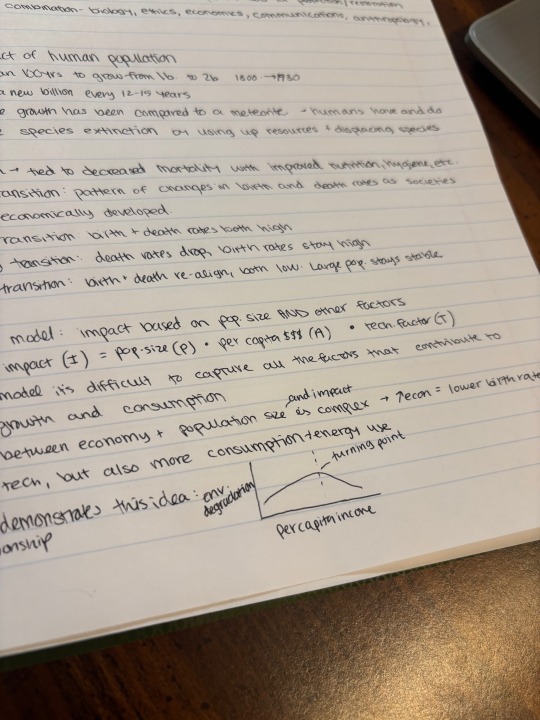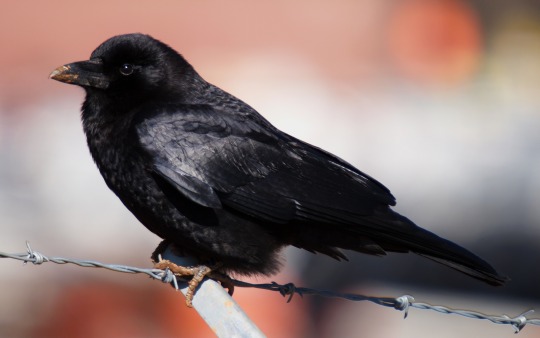#Conservation science
Explore tagged Tumblr posts
Text

baby graph :’) that’s all that’s the post
#not to scale or anything it’s showing a hypothetical relationship#conservation science#biology#study blog#study notes#studyblr#stem academia
4 notes
·
View notes
Text
i got accepted to oregon state university!!!! enrolling into the fisheries, wildlife, and conservation sciences program :3
#i am soooooooo excited and grateful rn#it only took like a week to hear back#i start in the fall!!#wildlife biology#conservation science#conservation biology#oregon state university#diary𐦍
6 notes
·
View notes
Text
*ੈ𐐪𐑂 hello ! ⭒˚。⋆
my name is freya or florian, and i really love insects (especially wild bees !) i am studying conservation science, and i may use this space as a way to share things i find cool, which may help me study !! :]
this semester i am studying:
natural resource law
introductory chemistry
ecology
atmospheric science
about me and interests !
i am 19 !
my pronouns are they/it !
i'm episcopalian !
i've been studying bees for over 4 years !!
i have a bearded dragon named ozzie !
my favorite musicians are the oh hellos and mitski ! fleet foxes and hozier are also lovely !
my other interests include: crochet, choir playing board games with friends, studying the bible, dnd, faeries, playing video games, good omens, tarot, enneagram
please be respectful of all peoples, cultures, identities, and creeds here ! everyone is welcome as long as you do not dehumanize or invalidate others ! i will mostly be keeping politics off this blog, not because it isn't important but bc i have other blogs for that. this is a fun and comforting place for me and i hope for you as well :] my private messages and asks are open to talk about mostly anything that i might post, as long as we converse in a kind and respectful manner. especially talk to me about bees :3 !!!!
#about me !!#mine#entomology#bees#conservation science#apico#<- my favorite game ever !!!#if u like anything i like please interact !!! and even if u don't please say hi :]#qpr
4 notes
·
View notes
Text
Welcome, nature explorers!

View On WordPress
#adventure#afforestation#animals#ants#awareness#backyard exploration#backyard nature#biodiversity#bird calls#birds#birdsong#butterflies#Canada#caterpillars#Citizen Science#City Nature Challenge#community#Community Science#connect with nature#conservation#conservation science#discovery#Earth day#eco adventures#Ecological Exploration#ecological health#ecosystem health#ecosystems#education#environment
1 note
·
View note
Text

#rabies#epidemiology#nature#environment#conservation#raccoon#animals#science#veterinary#north america#trash panda
25K notes
·
View notes
Text
The comet moth, also known as the Madagascan moon moth (Argema mittrei). They’re endangered in the wild due to habitat loss from deforestation and agricultural activities but is bred in captivity
8K notes
·
View notes
Video
youtube
অদ্ভুত থাইলাসিন কি আবার ফিরে আসবে...!
#youtube#থাইলাসিন#Thylacine#তাসমানিয়ান টাইগার#Extinct species#ডিঅক্সিরিবার্থ#De-extinction#ক্লোনিং প্রযুক্তি#Cloning technology#জেনেটিক রিসার্চ#Genetic research#সংরক্ষণ বিজ্ঞান#Conservation science#বিলুপ্ত প্রাণীর পুনরুত্থান#Reviving extinct animals#জুরাসিক প্রকল্প#Jurassic projects#বন্যপ্রাণী পুনরুদ্ধার#Wildlife restoration#অস্ট্রেলিয়ান বন্যপ্রাণী#Australian wildlife#থাইলাসিন ডিএনএ#Thylacine DNA#ইকোলজিক্যাল ইফেক্ট#Ecological impact#বিলুপ্তি রোধ#Extinction prevention
0 notes
Text
#!!!!!#great white shark#sharks#shark pups#good news#environmentalism#science#environment#nature#animals#conservation#nyc#new york#new york city#usa#ocean life#marine life#sea life
32K notes
·
View notes
Text
A caveat to this study: the researchers were primarily looking at insect pollinator biodiversity. Planting a few native wildflowers in your garden will not suddenly cause unusual megafauna from the surrounding hinterlands to crowd onto your porch.
That being said, this study backs up Douglas Tallamy's optimistic vision of Homegrown National Park, which calls for people in communities of all sizes to dedicate some of their yard (or porch or balcony) to native plants. This creates a patchwork of microhabitats that can support more mobile insect life and other small beings, which is particularly crucial in areas where habitat fragmentation is severe. This patchwork can create migration corridors, at least for smaller, very mobile species, between larger areas of habitat that were previously cut off from each other.
It may not seem like much to have a few pots of native flowers on your tiny little balcony compared to someone who can rewild acres of land, but it makes more of a difference than you may realize. You may just be creating a place where a pollinating insect flying by can get some nectar, or lay her eggs. Moreover, by planting native species you're showing your neighbors these plants can be just as beautiful as non-native ornamentals, and they may follow suit.
In a time when habitat loss is the single biggest cause of species endangerment and extinction, every bit of native habitat restored makes a difference.
#nature#wildlife#animals#ecology#environment#conservation#science#scicomm#pollinators#bees#butterflies#hoverflies#insects#native plants#habitat restoration#solarpunk#hopepunk#naturecore#wildflowers#good news
6K notes
·
View notes
Text
"In one of Africa’s last great wildernesses, a remarkable thing has happened—the scimitar-horned oryx, once declared extinct in the wild, is now classified only as endangered.
It’s the first time the International Union for the Conservation of Nature (IUCN), the world’s largest conservation organization, has ever moved a species on its Red List from ‘Extinct in the Wild’ to ‘Endangered.’
The recovery was down to the conservation work of zoos around the world, but also from game breeders in the Texas hill country, who kept the oryx alive while the governments of Abu Dhabi and Chad worked together on a reintroduction program.
Chad... ranks second-lowest on the UN Development Index. Nevertheless, it is within this North African country that can be found the Ouadi Rimé-Ouadi Achim Faunal Reserve, a piece of protected desert and savannah the size of Scotland—around 30,000 square miles, or 10 times the size of Yellowstone.
At a workshop in Chad’s capital of N’Djamena, in 2012, Environment Abu Dhabi, the government of Chad, the Sahara Conservation Fund, and the Zoological Society of London, all secured the support of local landowners and nomadic herders for the reintroduction of the scimitar-horned oryx to the reserve.
Environment Abu Dhabi started the project, assembling captive animals from zoos and private collections the world over to ensure genetic diversity. In March 2016, the first 21 animals from this “world herd” were released over time into a fenced-off part of the reserve where they could acclimatize. Ranging over 30 miles, one female gave birth—the first oryx born into its once-native habitat in over three decades.
In late January 2017, 14 more animals were flown to the reserve in Chad from Abu Dhabi.
In 2022, the rewilded species was officially assessed by the IUCN’s Red List, and determined them to be just ‘Endangered,’ and not ‘Critically Endangered,’ with a population of between 140 and 160 individuals that was increasing, not decreasing.
It’s a tremendous achievement of international scientific and governmental collaboration and a sign that zoological efforts to breed endangered and even extinct animals in captivity can truly work if suitable habitat remains for them to return to."
-via Good News Network, December 13, 2023
#chad#abu dhabi#north africa#rewilding#endangered species#conservation#zoology#conservation biology#oryx#good news#hope#texas#big game#animals#endangered#environmentalism#environmental science#zoo#zoos#zoo animals
25K notes
·
View notes
Text
Flight of the mini-mantas! These little devils are mobulas, which are cousins of the more famous manta ray. They are known to migrate together in enormous schools of hundreds or even tens of thousands of individuals (especially off of Baja California Sur), and have no spines like a stingray. As such they are completely harmless, and beautiful to watch underwater.
#mobula#ray#marine biology#marine bio#biology#zoology#animals#nature#ocean#marine science#ocean life#chondrichthyes#elasmos#elasmobranchs#marine ecology#marine conservation#conservation#fish
2K notes
·
View notes
Text
On this day in 1936, the last known thylacine (Thylacinus cynocephalus) died at the Hobart Zoo in Tasmania. The animal’s passing marked the extinction of its species. Also known as the “Tasmanian wolf,” the thylacine was Australia’s largest marsupial predator. It sported a dog-like form, with distinctive stripes, and a jaw that could open up to 80 degrees—one of the largest gapes of any mammal.
The thylacine fed primarily on small mammals and birds. Nocturnal and shy, it was seldom seen by humans. However, beginning in the 19th century, settlers believed the animals threatened their livestock and, spurred on by a bounty offered by the government, hunted them relentlessly. Attempts at protecting the species in the wild came too late: Despite numerous unconfirmed reports of sightings in recent decades, no definitive sightings have occurred since the 1930s.
#science#museum#nature#natural history#animals#fact of the day#did you know#thylacine#extinction#animal facts#cool animals#australia#tasmania#museum collections#conservation#on this day#amnh#on this date
4K notes
·
View notes
Photo


If you can, please share or donate to this fundraiser for studying native U.S. isopods. Anything helps!
From one of the organizers:
“I’m currently working on a project centered around native western United States isopods specifically in the genus Venezillo. With this research we’ve already found 8 undescribed species of Venezillo from California alone and as we continue this work there will likely be even more found! I’ve already put in many hours of field work for this project and I’ve decided to try crowdfunding to offset some of the costs of travel and molecular work for this project.”
Learn more here: https://experiment.com/projects/undescribed-and-imperiled-describing-the-neglected-native-venezillo-of-the-west-coast-of-the-united-states
#animals#nature#conservation#bugs#crustaceans#isopod#woodlouse#pill bug#pill woodlouse#science#fundraiser
1K notes
·
View notes
Text
Plant Blindness and Beyond: Shifting Our Perception of Urban Nature

View On WordPress
#BioBlitz#biodiversity#biodiversity data#biodiversity loss#birds#Canada#Citizen Involvement#Citizen Science#City Nature Challenge#climate change#CNCYXE#Community Engagement#Community Science#conservation#conservation activism#Conservation Biology#Conservation Efforts#conservation science#data collection#early detection#Earth Conservation#eco-friendly activities#Ecological Awareness#ecological connectivity#ecological disaster#ecological footprint#ecological networks#ecological research#Ecosystem#ecosystem health
1 note
·
View note
Text



Endangered axolotl release raises hopes for rare amphibian
One of the world's most endangered amphibians - the strange, perpetually smiling Mexican axolotl - has thrived after being released in artificial wetlands, scientists have discovered. In a study that provides hope for the long-term future of a creature that was pushed to the brink of extinction, scientists released 18 captive-bred axolotls in restored and artificial wetland close to Mexico City. The researchers fitted the animals with radio trackers and found that they "survived and foraged successfully at both sites" - even gaining weight. Lead researcher Dr Alejandra Ramos from the Autonomous University of Baja California said this was an "amazing result"...
Read more:
Captive-bred axolotl thrives in restored wetlands in Mexico City
1K notes
·
View notes
Text
The Brush tit (Callithrix jacchus), more commonly known as a marmoset, a small New World monkey native to Brazil. Adults weigh between 182–354 grams (6–12 ounces) and are diurnal and arboreal, spending most of their time in trees.
3K notes
·
View notes